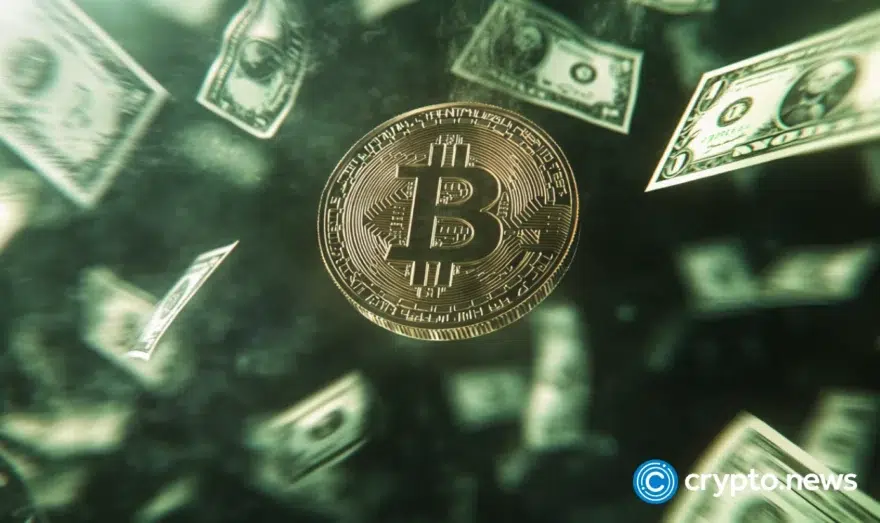How many Bitcoins are there? Bitcoin’s total supply

Bitcoin is the oldest and biggest cryptocurrency by market capitalization today, but how many Bitcoins are there available for new miners?
Table of Contents
What is Bitcoin?
Dubbed the ‘King of Crypto’, Bitcoin (BTC) was the first-ever cryptocurrency, created by the pseudonymous Satoshi Nakamoto in 2009. A decentralized, peer-to-peer digital currency and monetary system, Bitcoin relies on cryptographic techniques to safeguard and validate transactions, as well as generate new units.
Bitcoin is comprised of two key components. The first is the overarching concept and system, including the decentralized digital currency, underlying technology, user community, and extensive ecosystem. The second pertains to the individual units of the cryptocurrency, BTC. This differentiation is crucial for distinguishing between the broader concept of Bitcoin and the precise amounts of the cryptocurrency itself.
History of Bitcoin
As the first cryptocurrency, Bitcoin predates most crypto exchanges. The first ever bitcoin exchange took place over the Bitcoin Talk Forum – which, like the coin, went live in 2009 – when two forum users exchanged 5,050 BTC for $5.02 via PayPal putting the exchange rate at $0.00099.
It wouldn’t be until 2011 when bitcoin reached the $1 mark as more and more investors began picking up the coin. From there it would only skyrocket, hitting $10 just a few months later and peaking at almost $30 that year. Though 2012 was relatively uneventful for BTC, 2013 would see the coin’s price reach $250 in April and shoot upwards to over $1,000 in December.
Though the next two years saw a someone spottier time for Bitcoin, by 2017, adoption of the coin was in full swing and the price soared to an all-time high of $19,345.49. However, it was 2021 that would see the crypto reaching its headiest heights to date, peaking at $68,789.63 in November as popular crypto exchange Coinbase went public.
Bitcoin’s position as the ‘King of Crypto’ was not enough to provide it immunity from the Crypto Winter of 2022, and the coin saw a steady decline throughout the year, going from around $50,000 in January to under $20,000 in December.
How many Bitcoins are there?
Bitcoin’s maximum supply is set at 21 million BTC. According to Ray Dillinger, who was involved in reviewing Bitcoin’s early code, the supply cap was purposefully chosen by Nakamoto so that the smallest denomination of Bitcoin would always be worth less than $0.01, making it sufficiently divisible even as the world’s primary currency.
“21 million, times 10^8 subdivisions, meant that even if the whole world’s money supply were replaced by the 21 million bitcoins the smallest unit (we weren’t calling them Satoshis yet) would still be worth a bit less than a penny, so no matter what happened — even if the entire economy of planet earth were measured in Bitcoin — it would never inconvenience people by being too large a unit for convenience.
Ray Dillinger, BitcoinTalk
In an email with Bitcoin developer Mike Hearn, Satoshi Nakamoto further elaborated on this point, writing:
“If Bitcoin remains a small niche, it’ll be worth less per unit than existing currencies. If you imagine it being used for some fraction of world commerce, then there’s only going to be 21 million coins for the whole world, so it would be worth much more per unit.”
As for how many bitcoins are in circulation, in January 2024, there was a total number of 19.6 million BTC in circulation, leaving just 1.4 million bitcoins to be mined. On average, new bitcoins are introduced into circulation roughly every 10 minutes, the same amount of time it takes to generate a new block on the Bitcoin blockchain. The number of bitcoins minted per block is halved after every 210,000 blocks, approximately once every four years, reducing the number of tokens being added to the supply.
At Bitcoin’s inception, the block reward was 50 BTC, after 210,000 blocks were mined in November 2012, it was reduced to 25 BTC. In July 2016, after a further 420,000 blocks, the reward was reduced to 12.5 BTC. At the last Bitcoin halving event in May 2020 the reward was lowered to just 6.25 BTC. The next halving is expected in April 2024 and will reduce the mining reward to 3.125 BTC.
What happens when Bitcoin reaches its maximum supply?
Bitcoin is estimated to reach its maximum in 2140, at which point miners will no longer receive new tokens as a reward, leaving the value to be determined entirely by supply and demand.
According to the Bitcoin whitepaper, miners will still be motivated to verify transactions and keep the network safe as they will still receive transaction fees after verifying a block.
Some believe that Bitcoin will be worth more once it hits its maximum supply and therefore the amount of fees received for each block of transactions will also increase. However, it is also possible that Bitcoin mining could become unprofitable in the absence of block rewards.
It’s also worth noting that adjustments to the supply cap could be made in the future. This could involve modifying the maximum cap, perhaps doubling it to 42 million, or implementing a redenomination to alter the supply. However, any such changes would require a consensus among the majority of the Bitcoin mining network.
Conclusion
The exploration of Bitcoin’s total supply reveals an interesting aspect of its design and functionality. The steady release of new bitcoins, occurring approximately every 10 minutes through the creation of blocks on the blockchain, is a deliberate and systematic process. The predetermined reduction of bitcoins minted per block by 50% after 210,000 blocks, or about four years, adds an intriguing layer of scarcity to this digital currency.
As we navigate the world of cryptocurrencies, understanding the intricacies of Bitcoin’s supply mechanism contributes to a comprehensive grasp of its economic model and long-term sustainability.
FAQs
How many bitcoins are left?
As of January 2024, there were 19,600,075 total bitcoins in the world, leaving 1,399,925 BTC to be mined.
How many bitcoins are lost?
There have been multiple instances of people losing their bitcoins without anyone being able to say for sure how many of those coins are gone forever and how many can be recovered. Estimates from experts range from 10% to 25% of the total Bitcoin supply might never be found.
How many bitcoins are mined per day?
Based on the current block reward of 6.25 bitcoins per block and the average block time of 10 minutes, approximately 900 bitcoins are mined per day.
Who owns the most bitcoins?
As of 2024, Bitcoin creator Satoshi Nakamoto is listed the top BTC holder with around 1.1 million BTC.















